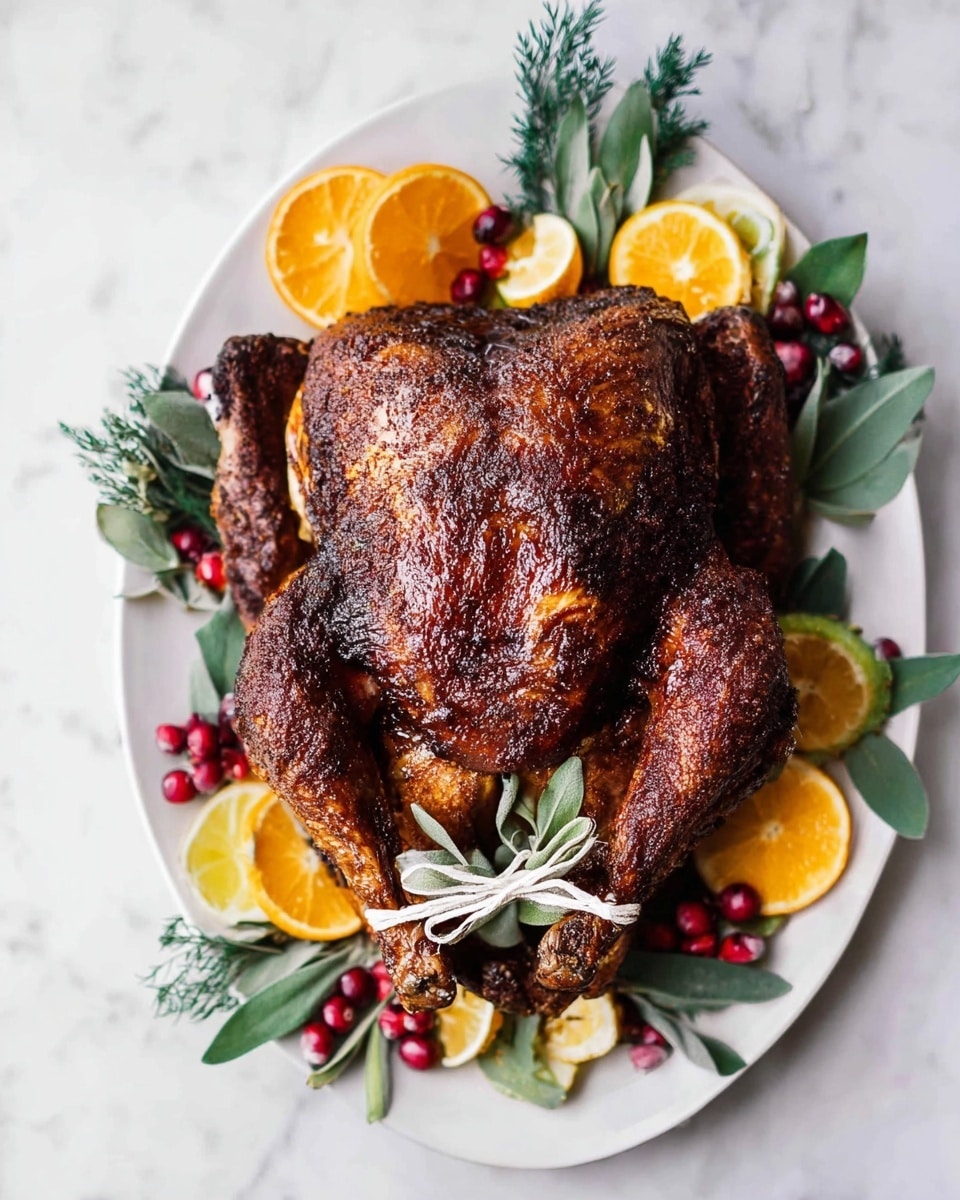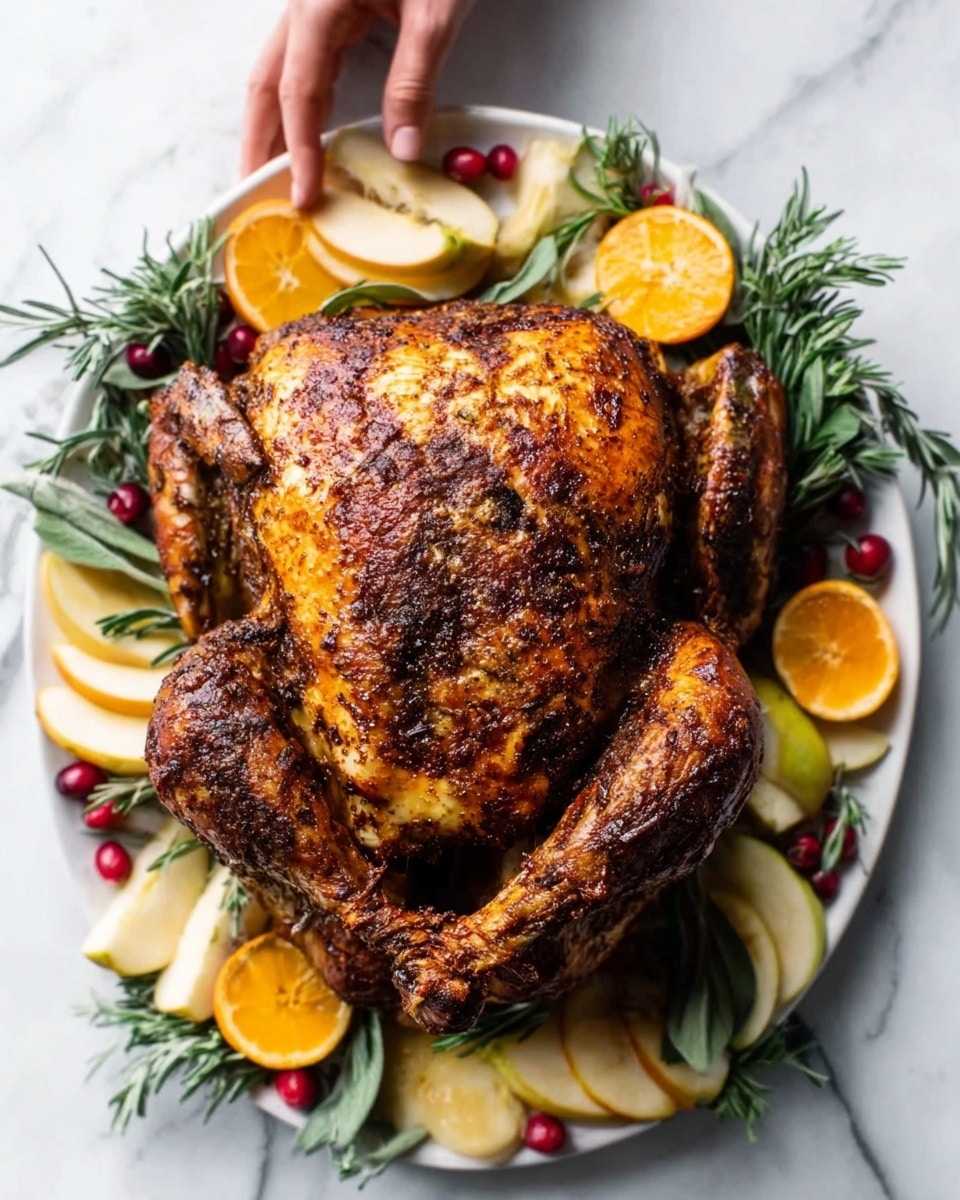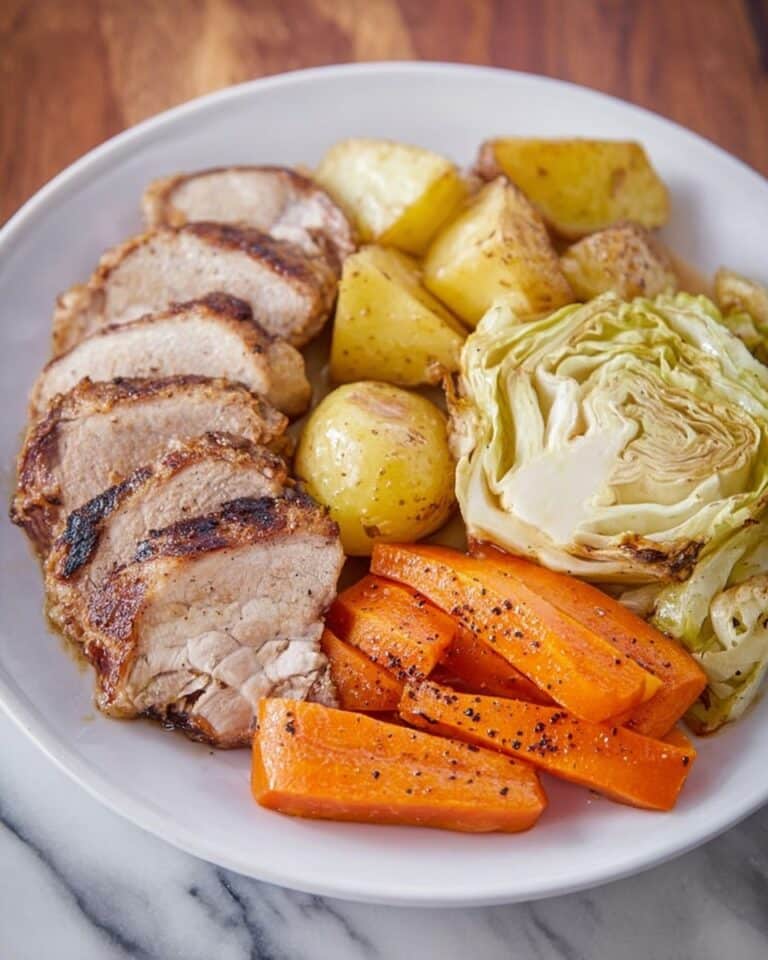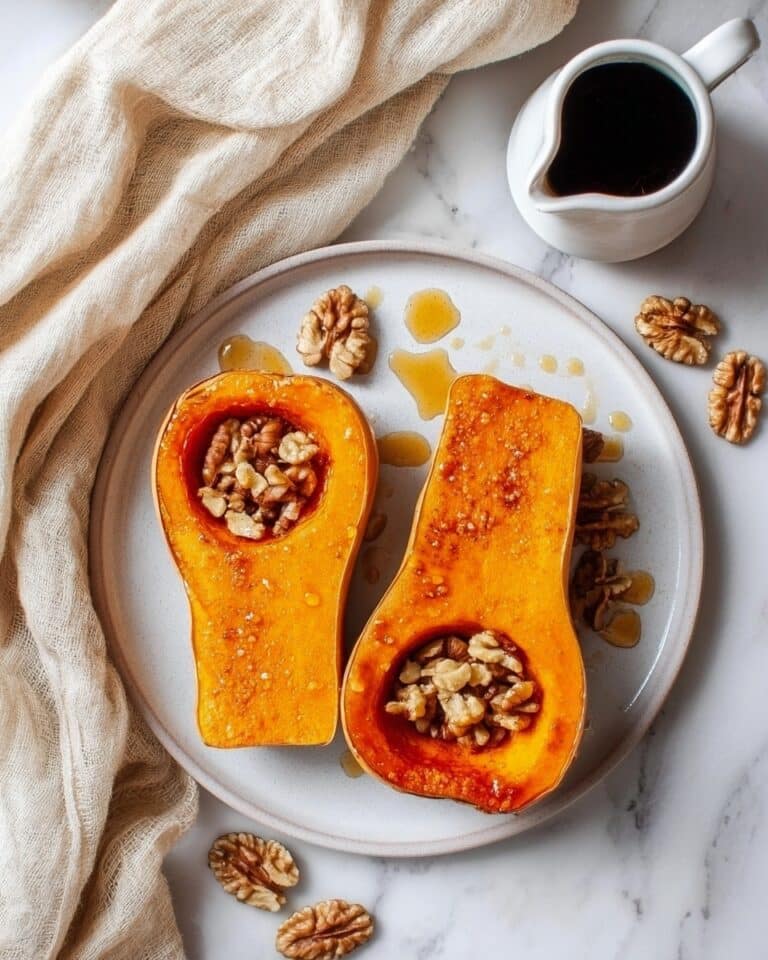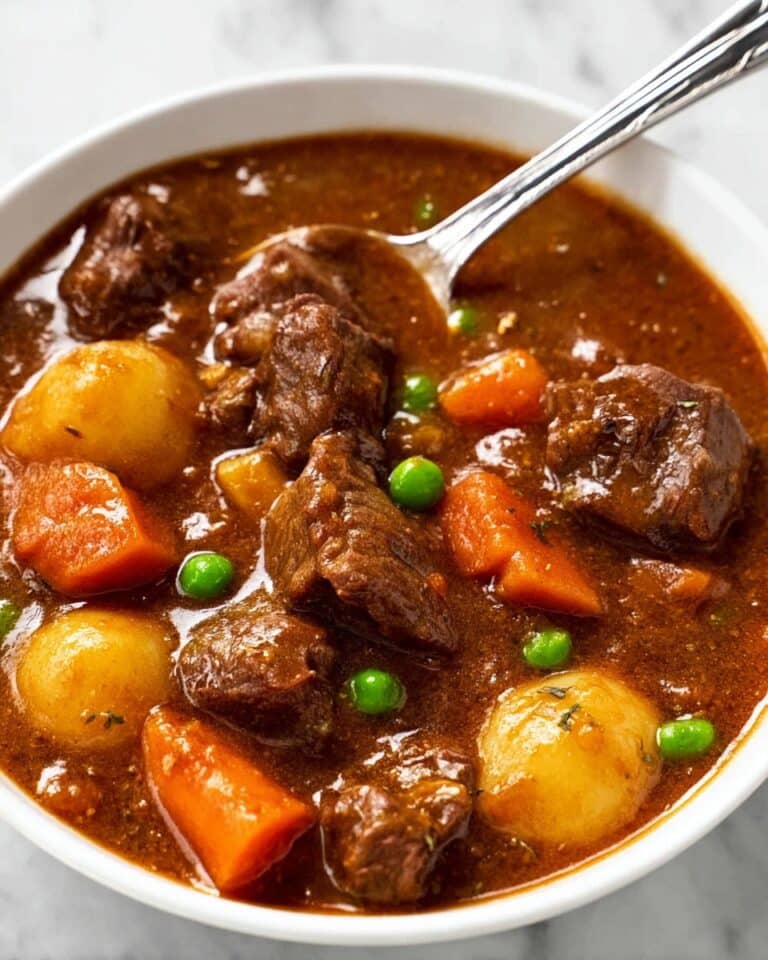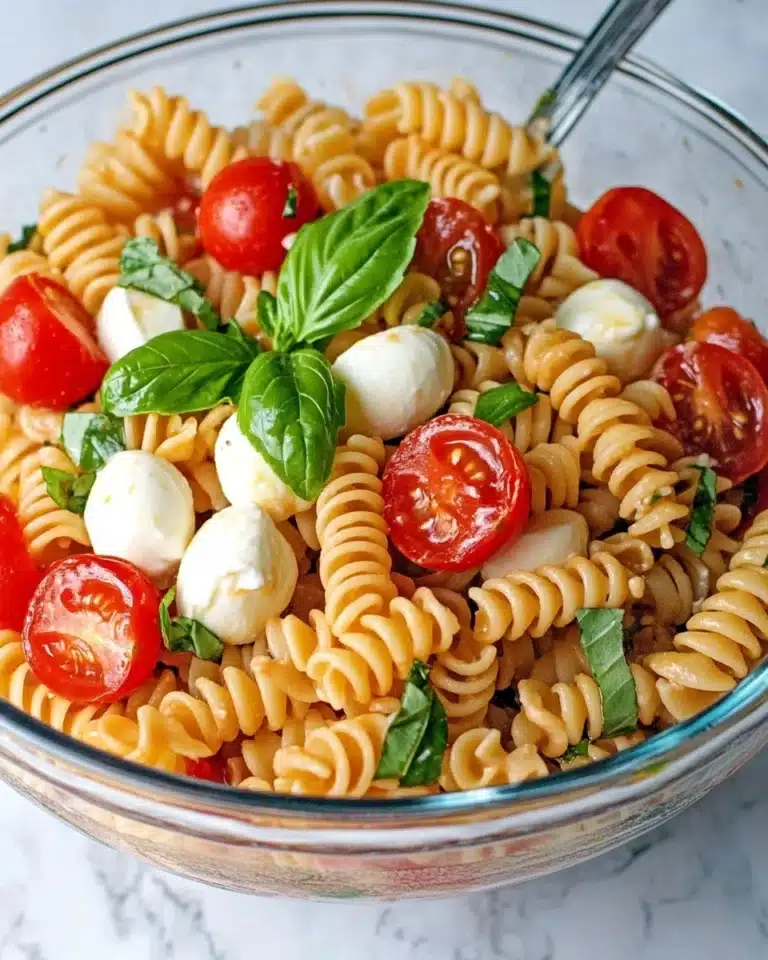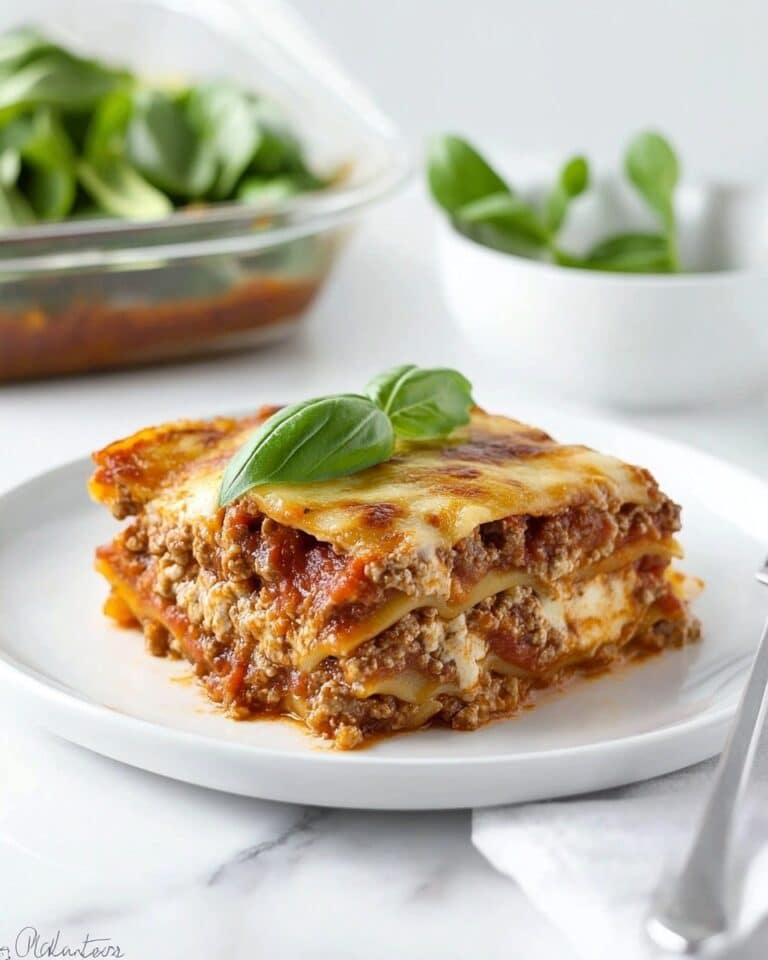If you’ve ever wanted to wow your family and friends with the juiciest, crispiest, most flavorful bird, you’ve got to try The Best Fried Turkey Recipe. Trust me, this isn’t your everyday turkey – it’s a game changer. From the crispy skin to that tender, perfectly seasoned meat, I’m excited to share everything you need to nail this at home, whether it’s Thanksgiving, a backyard party, or just because you want an epic meal. Keep reading, and you’ll soon be the fried turkey pro everyone asks for!
Why You’ll Love This Recipe
- Juicy and Flavorful: The injection marinade seeps deep into the meat, keeping every bite moist and bursting with flavor.
- Crispy Skin Greatness: High-temp frying locks in juiciness and creates that iconic golden, crispy skin that turkey lovers crave.
- Simple Yet Impressive: You don’t need a bunch of complicated steps or secret ingredients; this recipe is straightforward but delivers big on wow factor.
- Perfect for Any Occasion: Whether it’s a holiday feast or a casual get-together, this fried turkey is guaranteed to impress.
Ingredients You’ll Need
Each ingredient plays a key role in building layers of flavor, moisture, and that irresistible golden crust. Sourcing fresh, quality spices and using peanut oil for frying makes all the difference in the taste and texture.
- Large Turkey (under 18 lbs): Choose a turkey that’s small enough to safely fit your fryer but large enough for your crowd.
- Peanut Oil: This oil has a high smoke point and a neutral taste, making it perfect for frying your turkey evenly without overpowering flavors.
- Chili Powder: Adds a subtle smoky kick that’ll elevate the rub.
- Paprika: For color and a mild sweetness that complements the spices.
- Garlic Salt and Onion Salt: These give the turkey a nuanced savory boost that’s totally irresistible.
- Seasoning Salt: A little extra punch to layer your flavors.
- Fresh Ground Pepper: Adds just the right amount of heat and complexity.
- Melted Butter: Brings richness and helps the skin crisp up beautifully.
- Canola or Vegetable Oil: Works great mixed with melted butter for your injection marinade.
- Worcestershire Sauce: Adds an umami depth to your marinade.
- Water: Balances the marinade’s concentrated flavors.
- Fresh Lemon (half, squeezed): Brightens the marinade with a hint of citrus.
- Ground Sage and Dried Thyme: Classic herbs that complement turkey and warm up the overall flavor.
Variations
I love experimenting with different flavor profiles depending on the season or who I’m cooking for, and with The Best Fried Turkey Recipe, you can easily tweak the herbs or spices to suit your mood — it’s super flexible!
- Spicy Variation: Add cayenne pepper or smoked chipotle powder to the rub for a smoky, spicy kick. My family goes crazy for this one!
- Herb-Forward: Swap out the thyme and sage for fresh rosemary and oregano for a garden-fresh twist that complements summer gatherings.
- Garlic Lover’s: Double down on garlic salt and add some fresh minced garlic into your injection marinade for an irresistible aroma.
- Alcohol-Infused Marinade: Try adding a splash of bourbon or apple cider to the injection for some subtle richness and sweetness.
How to Make The Best Fried Turkey Recipe
Step 1: Prepare Your Turkey and Marinade
First things first: make sure your turkey is completely thawed, rinsed, and patted dry. I can’t stress enough how important it is to remove any moisture on the skin for that crispy finish. Mix up the injection marinade according to the recipe, then fill your injector syringe. Poke just one hole and gently move the needle around inside different sections of the bird while pushing out the marinade. This technique lets you spread the flavor evenly without making the skin look like Swiss cheese. It’s one of those small tricks I learned the hard way – fewer holes, more flavor.
Step 2: Apply the Spice Rub and Refrigerate
Mix your rub spices and give your turkey a generous massage — rub under the skin, inside the cavity, and all over the surface. Wrapping the turkey in cling wrap and refrigerating for at least one hour (but ideally overnight) lets those spices sink in and build incredible depth. I usually pop mine in overnight to wake up the next day smelling amazing and tasting even better.
Step 3: Prepare Your Fryer and Oil
Before heating your oil, do a “water test” by filling your stockpot with water to your fill line and submerging the turkey—still in a sealed bag—to see where the water level rises. Mark this line on the pot. This ensures you don’t accidentally overfill your oil to the point it spills over when you put the turkey in. Safety first! Once that’s set, dry the pot thoroughly, add your peanut oil to the marked line, and preheat it to 275°F.
Step 4: Fry the Turkey to Perfection
Remove the cling wrap and pat your turkey dry one last time to keep splatters to a minimum. Wearing protective gloves and long sleeves, carefully lower the turkey into the hot oil using a hook or hanger. Insert a thermometer probe and close the lid. Increase oil temperature to 325°F and cook the turkey until the internal temperature reaches 165°F, usually about 3-4 minutes per pound. This method cooks the bird evenly, sealing in juices while giving you that irresistible crunch.
Step 5: Rest and Carve
This is where patience pays off. Remove the turkey carefully and let it rest for 20-30 minutes before carving. Resting allows the juices to redistribute so every slice is tender and juicy — I always get asked how it stays so moist, and this step is key!
Pro Tips for Making The Best Fried Turkey Recipe
- Safety First: Always fry turkey outdoors on a flat surface and keep a fire extinguisher close. I can’t overstate how important this is for peace of mind.
- Oil Temperature Control: Using a thermometer is a lifesaver — frying at 325°F keeps the skin crispy without burning the exterior.
- Pat the Bird Dry: Moisture is enemy #1 to crispy skin, so make sure your turkey is bone dry before it hits the oil.
- Minimal Piercing for Marinade: I learned that making only a few holes to inject marinade prevents flavor from leaking and keeps the skin intact.
How to Serve The Best Fried Turkey Recipe
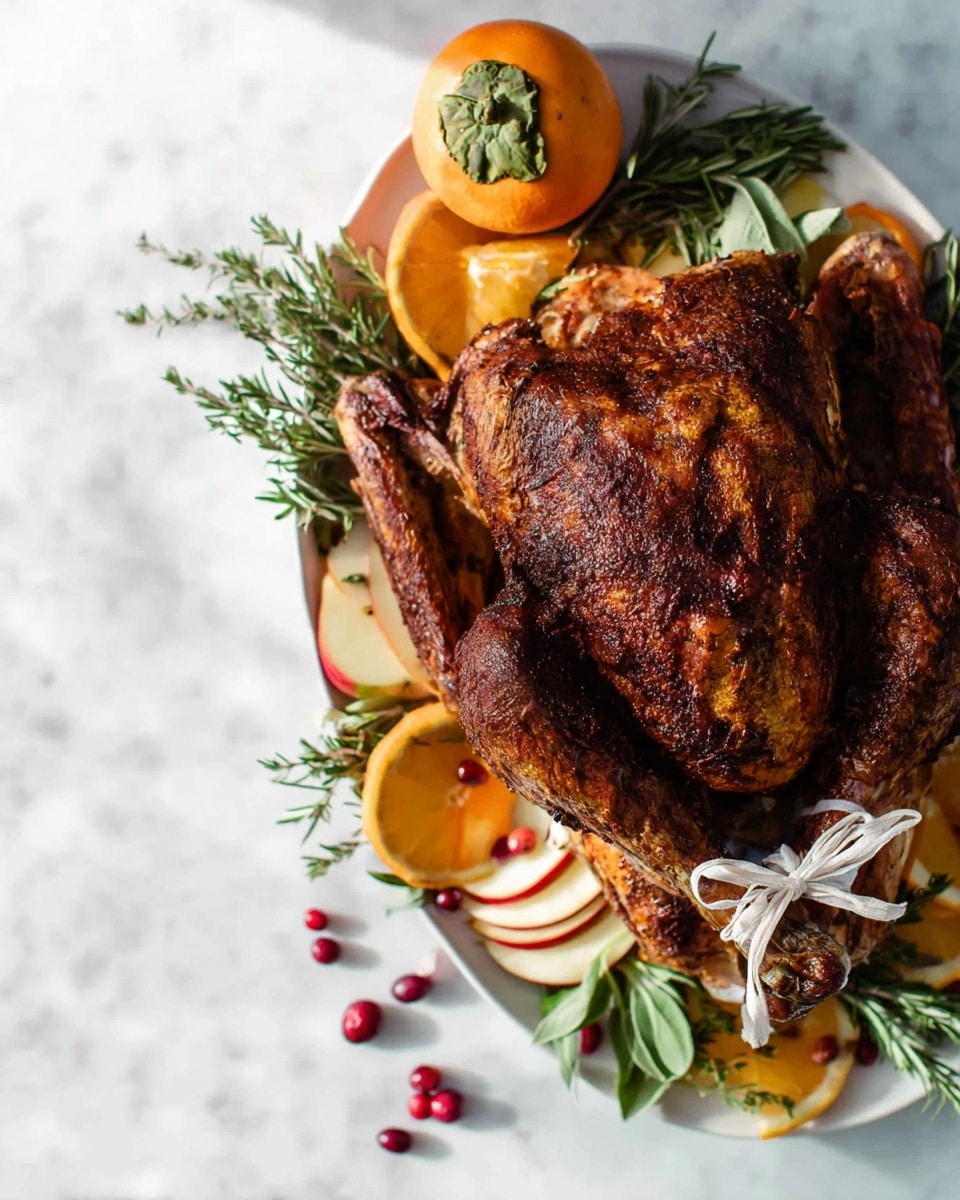
Garnishes
I like keeping it simple here: a sprinkle of fresh chopped parsley and some lemon wedges on the side. The parsley adds bright color and freshness, and squeezing the lemon right before eating gives a subtle zing that lightens the richness.
Side Dishes
Mashed potatoes with gravy, roasted sweet potatoes, collard greens, or even a warm cornbread salad are my go-to sides. They balance out the crispy richness of the fried turkey beautifully — each bite feels like a cozy hug.
Creative Ways to Present
For special occasions, I’ve served the fried turkey on a wooden platter surrounded by fresh herbs, cranberries, and orange slices. It’s both rustic and festive — guests always comment on how much they enjoy the eye candy as much as the taste.
Make Ahead and Storage
Storing Leftovers
I usually carve the leftover turkey and store it in airtight containers in the fridge. It keeps well for about 3-4 days. Reheating is easier and tastier when already sliced, so this saves time on busy days after the feast.
Freezing
If I have more turkey than we can eat, I freeze the carved pieces in freezer-safe bags. When reheated properly, frozen fried turkey still tastes fantastic and holds its moisture better than I expected.
Reheating
To bring back that crispy skin and juicy texture, I reheat in the oven at 350°F wrapped loosely in foil for about 15-20 minutes. This warms it through without drying it out. If you want to refresh the crispiness, remove the foil for the last 5 minutes.
FAQs
-
Can I fry a turkey that weighs more than 18 pounds using this recipe?
It’s best to keep your turkey under 18 pounds for safety and even cooking. Larger birds may not fit properly in most fryers and can cause oil overflow or undercooked meat inside. If you have a bigger bird, consider splitting it or using a larger commercial fryer designed for heavier turkeys.
-
What kind of oil is safest and best for frying turkey?
Peanut oil is ideal because it has a high smoke point and neutral flavor, ensuring the turkey cooks evenly and tastes delicious. Other oils like canola or vegetable oil can be used but watch the smoking point carefully to avoid burnt oil flavors.
-
How do I know when my fried turkey is fully cooked?
The most reliable way is to use a meat thermometer. The internal temperature should reach 165°F in the thickest part of the breast and thigh. Cooking times vary, but usually frying at 325°F takes about 3-4 minutes per pound.
-
Is it safe to fry a turkey indoors?
Absolutely not. Frying a turkey produces a lot of hot oil and steam that can be dangerous indoors. Always fry outdoors on a flat surface, away from buildings and flammable materials, and keep safety equipment nearby.
Final Thoughts
I absolutely love how this fried turkey recipe turns out every single time. When I first tried this method, I was honestly amazed at how much juicier and tastier my turkey was than my usual roasting efforts. The crispy skin, deep flavor layers, and juicy meat always get compliments, and it’s become a family favorite for holidays and special meals. I’m confident you’ll enjoy making and eating The Best Fried Turkey Recipe as much as I do — it’s a little adventure and a lot of flavor rolled into one delicious experience. So grab your fryer, prep that bird, and get ready to impress!
Print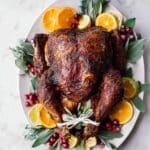
The Best Fried Turkey Recipe
- Prep Time: 1440 min
- Cook Time: 60 min
- Total Time: 1500 min
- Yield: 22 servings
- Category: Main Course
- Method: Frying
- Cuisine: American
Description
This is the ultimate fried turkey recipe, delivering a juicy, flavorful bird with a crispy exterior. Featuring a special injection marinade and a seasoned rub, this recipe ensures deep flavor penetration and a perfectly cooked turkey fried to golden perfection. It’s ideal for gatherings and special occasions, promising a delicious and memorable meal.
Ingredients
Turkey
- 1 large turkey (under 18 lbs)
Injection Marinade
- 1/4 cup melted butter
- 1/4 cup oil (canola or vegetable)
- 3 tbsp Worcestershire sauce
- 1/4 cup water
- 1/2 large lemon (fresh, squeezed)
- 1 teaspoon ground sage
- 1 teaspoon dried thyme
- 1 teaspoon garlic salt
- 1 teaspoon onion salt
Rub Spice Mix
- 1 tbsp chili powder
- 1 tbsp paprika
- 1 tbsp garlic salt
- 1 tbsp onion salt
- 1 tbsp seasoning salt
- 1 teaspoon fresh ground pepper
Frying Oil
- 3 gallons peanut oil
Instructions
- Prepare the Turkey: Completely thaw the turkey, then rinse it thoroughly and pat it dry with paper towels to remove excess moisture.
- Inject the Marinade: Mix all the injection marinade ingredients together well. Using a meat injection syringe, poke one hole at a time in different parts of the turkey and slowly inject the marinade. Try to minimize the number of holes while ensuring the marinade is evenly distributed inside the bird for maximum flavor infusion.
- Apply the Rub: Combine all rub spice ingredients and massage the mixture all over the turkey’s surface, including inside the cavity and beneath the skin to maximize seasoning. Wrap the turkey tightly in cling wrap and refrigerate for at least 1 hour and up to 24 hours; the longer it marinates, the better the flavor.
- Prepare for Frying: When ready to fry, fill your frying pot with water up to the first fill line. Place the wrapped turkey in an airtight bag and submerge it in the water to check how much oil will be needed to fully cover the bird without overflowing the pot. Mark the water level, then remove the turkey and dry the pot completely.
- Add Oil and Heat: Pour peanut oil into the pot up to the marked water line. Heat the oil to 275°F (135°C) initially. Remove the cling wrap from the turkey and pat it dry again thoroughly to avoid oil splatters.
- Fry the Turkey: Using a hanger or hook, carefully lower the turkey into the hot oil while wearing protective gloves and clothing to prevent burns. Insert a thermometer probe into the turkey and cover with the pot lid. Increase the oil temperature to 325°F (163°C) and fry until the internal temperature of the turkey reaches 165°F (74°C), ensuring it is fully cooked and safe to eat.
- Rest and Serve: Once cooked, carefully remove the turkey from the oil and let it rest for 20 to 30 minutes before carving to allow juices to redistribute, resulting in a juicy and tender turkey ready to serve.
Notes
- This fried turkey recipe is life-altering and arguably the best you’ll ever taste, with detailed instructions for an injection marinade and a flavorful rub.
- Always ensure the turkey is completely thawed before frying to avoid dangerous oil splatters or uneven cooking.
- Use protective gear such as gloves and long sleeves to prevent burns during the frying process.
- Monitor oil temperature carefully to maintain safety and proper cooking throughout the frying time.
- Allowing the turkey to rest after frying helps seal in juices for a moist and delicious result.
Nutrition
- Serving Size: 1 serving
- Calories: 211
- Sugar: 1 g
- Sodium: 600 mg
- Fat: 11 g
- Saturated Fat: 3 g
- Unsaturated Fat: 7 g
- Trans Fat: 0 g
- Carbohydrates: 1 g
- Fiber: 1 g
- Protein: 25 g
- Cholesterol: 90 mg

